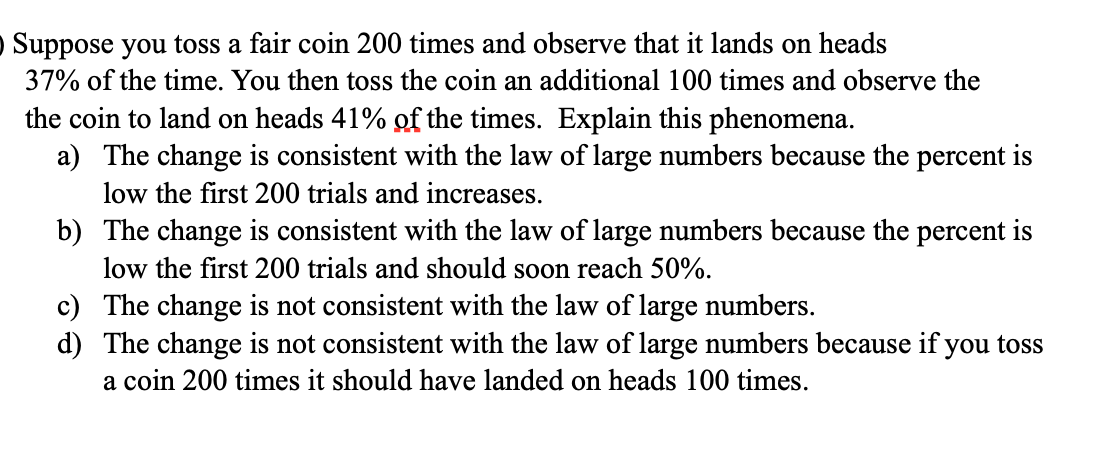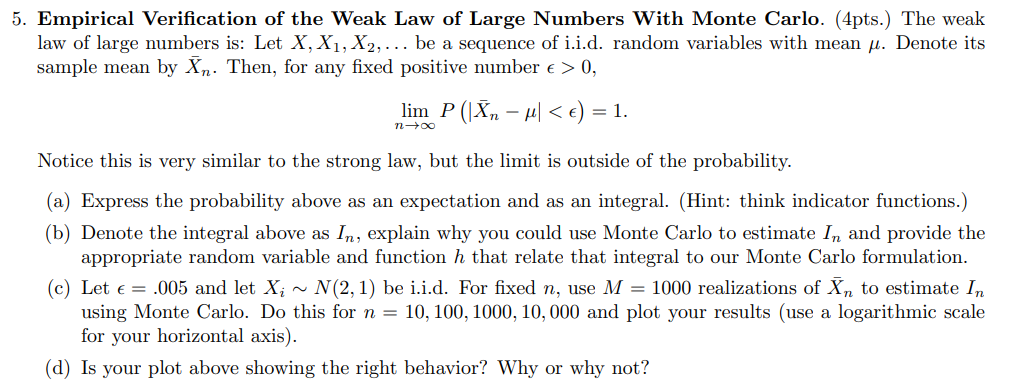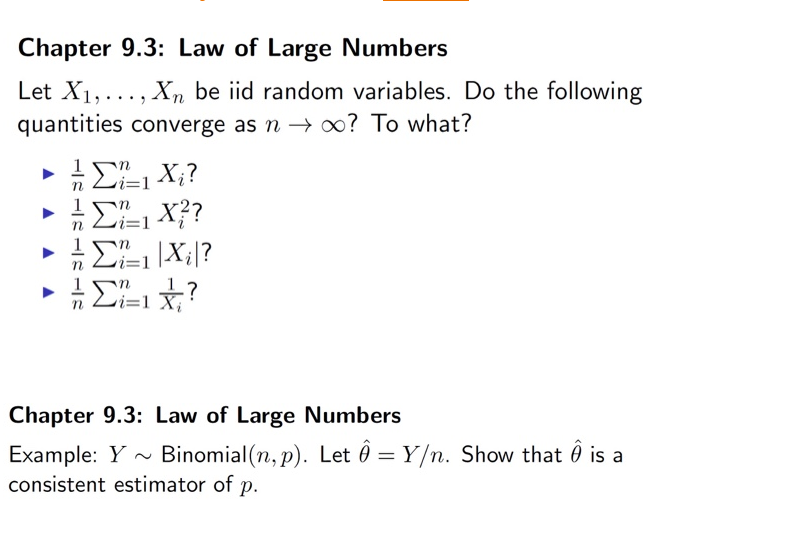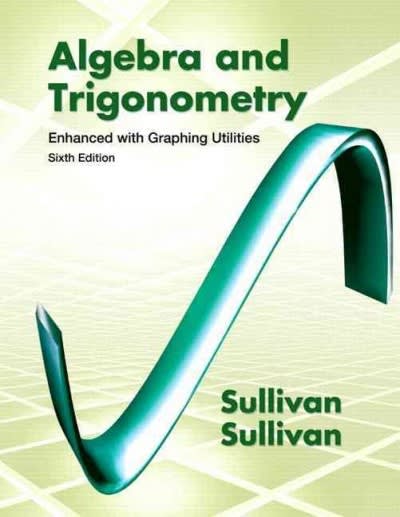Question
32. The P-an incentive for a right-followed test is P=0.042. Which of coming up next is INCORRECT? a) The P-an incentive for a two-followed test
32. The P-an incentive for a right-followed test is P=0.042. Which of coming up next is INCORRECT?
a) The P-an incentive for a two-followed test dependent on a similar example would be P=0.084
b) The P-an incentive for a left-followed test dependent on a similar example would be P=-0.042
c) The z-score test measurement is around z=1.73
d) We would dismiss H0 at "=0.05, however not at "=0.01
e) We would dismiss H0 at "=0.1, yet not at "=0.04
33. To look at the normal measure of time that Canadians and Americans spend driving, a
analyst gathers an example of 50 Canadians and 60 Americans. The Canadians spend an
normal of 4.6 hours seven days driving, with standard deviation 2.9 hours. The mean and
standard deviation for the example of Americans is 5.2 hours and 1.3 hours, separately.
The standard mistake of the distinction of test implies is
a) 2.314
b) 1.023
c) 0.443
d) 0.196
e) Cannot be processed as the example sizes are unique.
34. Which of the accompanying assertions about theory tests is INCORRECT?
a) H0 should consistently incorporate balance.
b) In a one-followed test, H1 includes either ">" or "
c) If the test measurement lies in the dismissal district, we reject the case.
d) The case can be either H0 or H1.
e) The basic worth shows the beginning of the dismissal locale.
35. A specialist wishes to think about the extent of people who casted a ballot in the last
government political race. Which of the accompanying end couldn't be drawn as the consequence of
any speculation test. "At the given degree of importance, we have evidence..."
a) "... that the extent of men who casted a ballot is bigger than the extent of ladies who
casted a ballot."
b) "... that the extent of men who casted a ballot varies from the extent of ladies who
casted a ballot."
c) "... that the extent of men who casted a ballot doesn't vary from the extent of ladies
who casted a ballot."
d) "... that the extent of men who casted a ballot is more modest than the extent of ladies who
casted a ballot."
e) None of the abovementioned (every assertion a-d is a potential end)



Step by Step Solution
There are 3 Steps involved in it
Step: 1

Get Instant Access to Expert-Tailored Solutions
See step-by-step solutions with expert insights and AI powered tools for academic success
Step: 2

Step: 3

Ace Your Homework with AI
Get the answers you need in no time with our AI-driven, step-by-step assistance
Get Started


